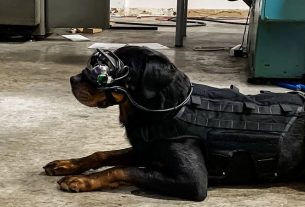Drones for spreading pesticides? A recent decree authorizes an experiment on the spreading of pesticides through this type of machine.For three years, this test period will determine whether the practice will continue or not.
Limited scope
The text in question is none other than the Decree of 26 August 2019 published a few days ago on Legifrance. This is the implementation of an experiment on the use of remotely piloted aircraft for the spraying of plant protection products.
However, the text specifies that this experimentation will be done only at the level of the products usable in organic farming. Parcels with a slope of 30% or more will also be involved. In addition, the decree also applies to certified High Environmental Value (HVE) operations. It could then be vineyards terraces and terraces located in various regions of France. In other words, the volume of plots concerned will remain anecdotal since the majority of French farms belong to intensive agriculture.
Nothing is done yet
In order for the experimentation to take place, it is first a question of constituting the file of the test protocol. These include locating the plots and defining the supply points of drones. In addition, a safety distance of 100 meters must be maintained with respect to buildings, dwellings, gardens and other public places. Many other areas are affected by this safety distance, such as Natura 2000 sites, national parks and other nature reserves.
On the side of the products used, the regulation naturally imposes to respect the requirements Organic Agriculture (AB) and High environmental value (HV). However, endocrine disruptors and other persistent and very bioaccumulative molecules are prohibited. This is also the case for products bearing hazard statements.
In addition, operators wishing to participate will have to comply with legislation specific to the use of drones. It will therefore be incumbent, in particular, to declare itself at the General Directorate of Civil Aviation (DGCA). Finally, the test protocol must be validated by three ministries before it can be applied in reality. In the case where the experiment is subject to a green light from the authorities, the operators must submit a final report detailing the test.

Email: ben@satprwire.com Phone: +44 20 4732 1985
Ben has been listening to the technology news for quite some time that he needs just a single read to get an idea surrounding the topic. Ben is our go-to choice for in-depth reviews as well as the normal articles we cover on a normal basis.



